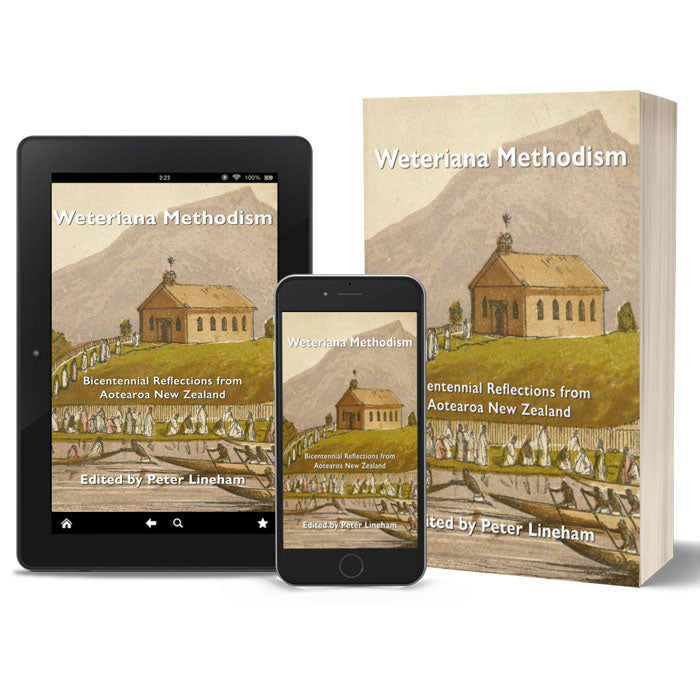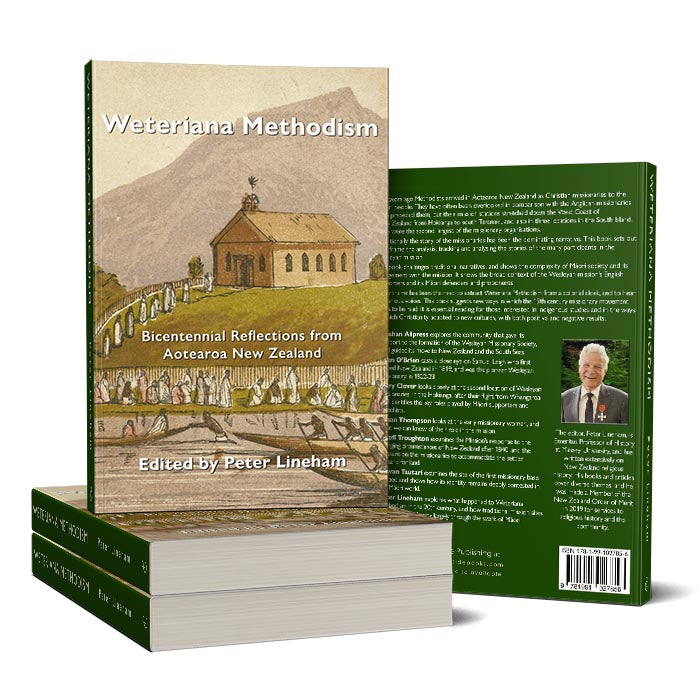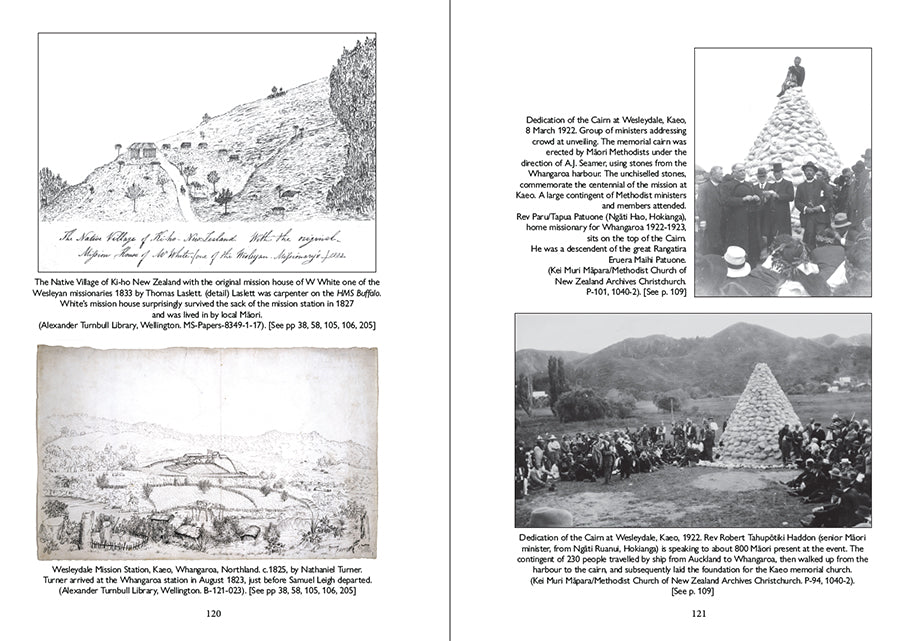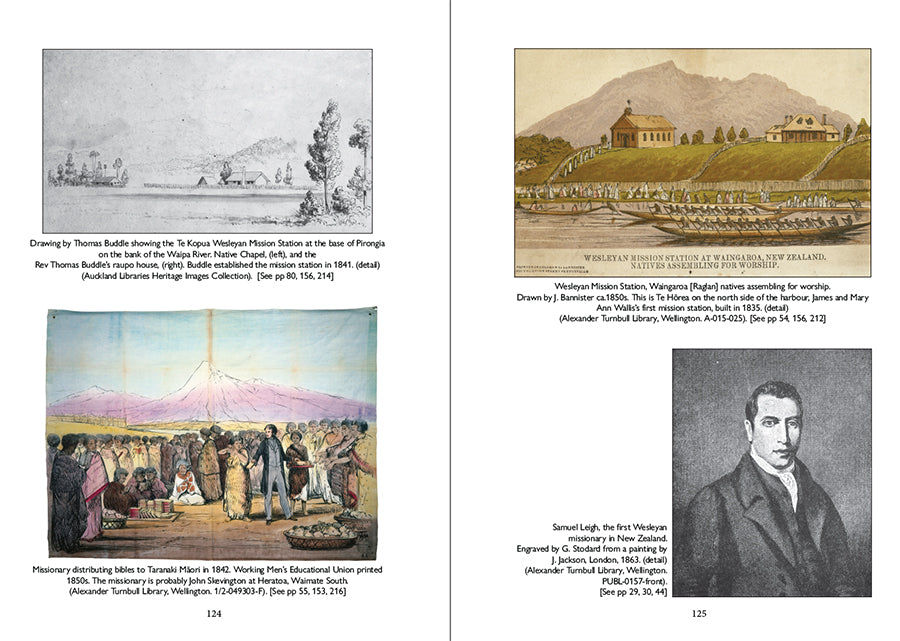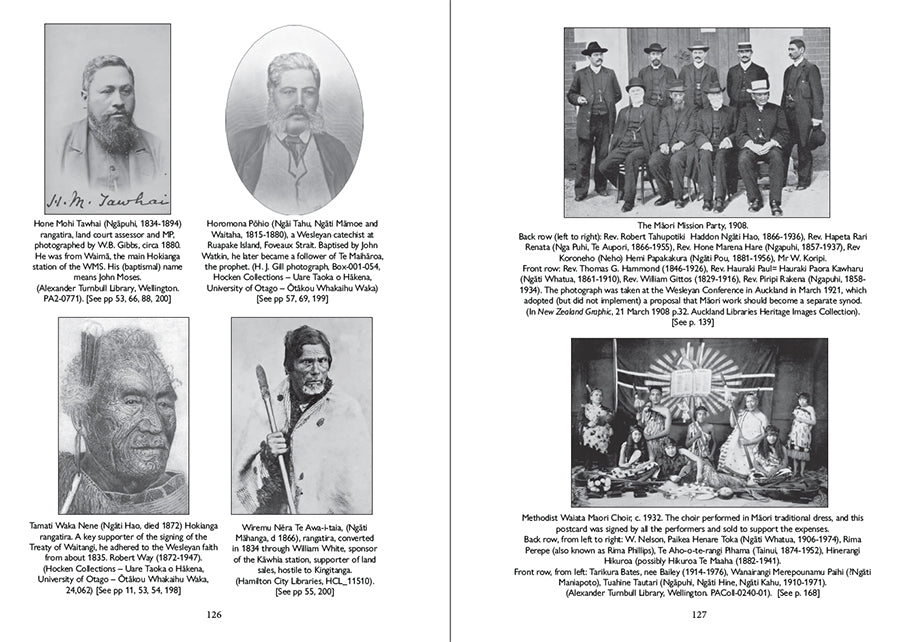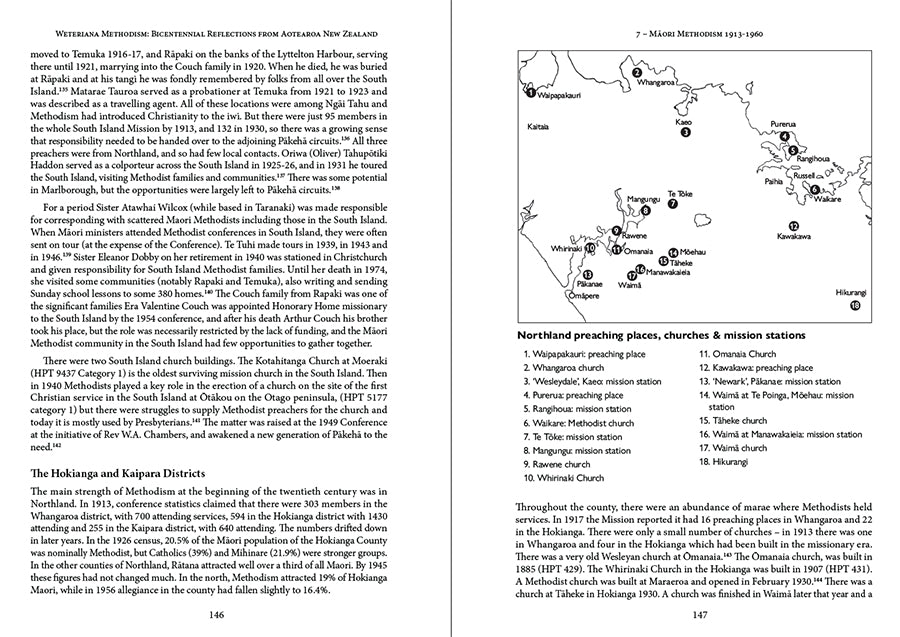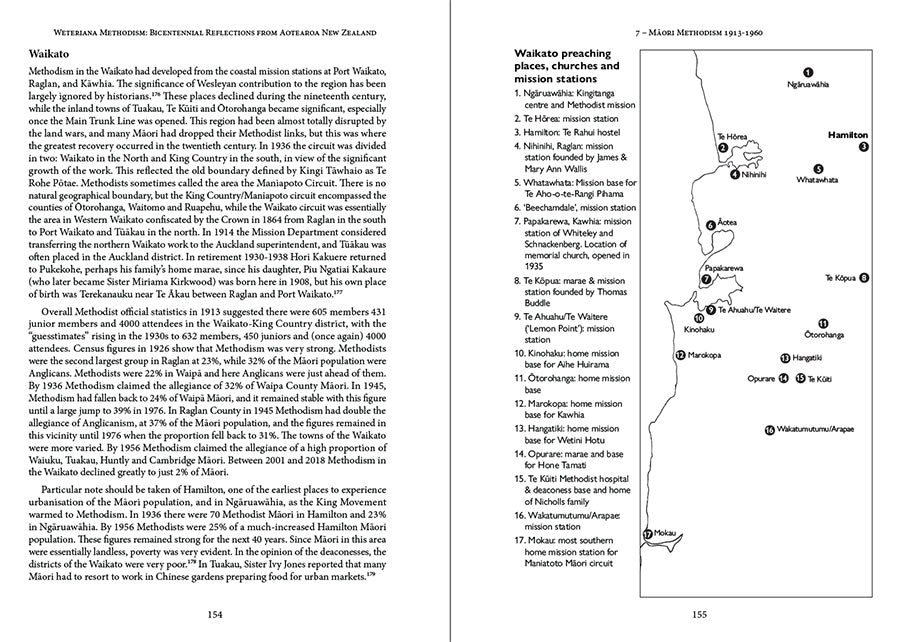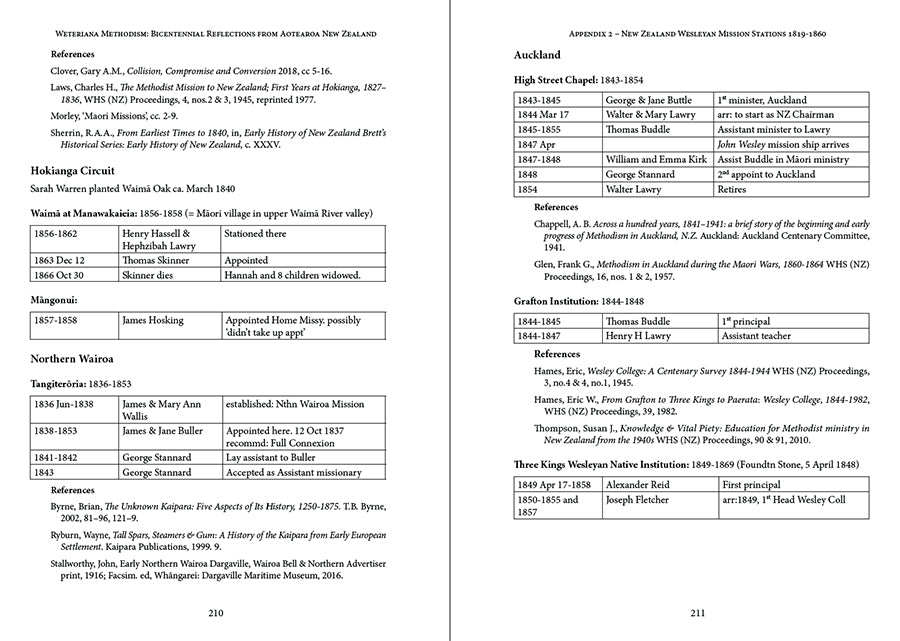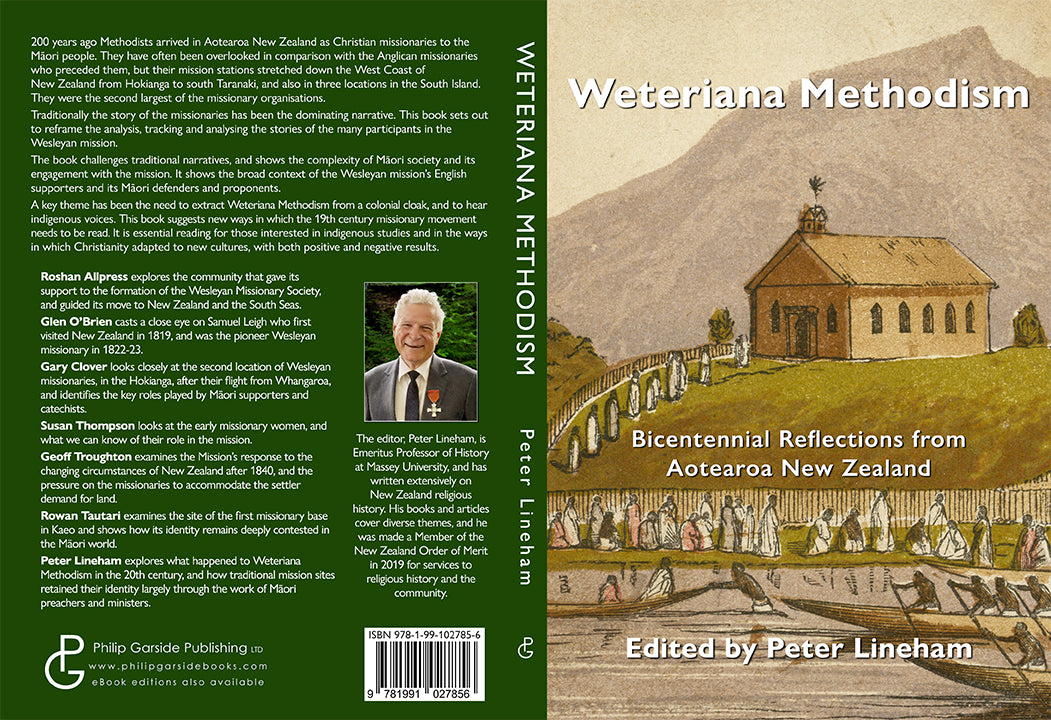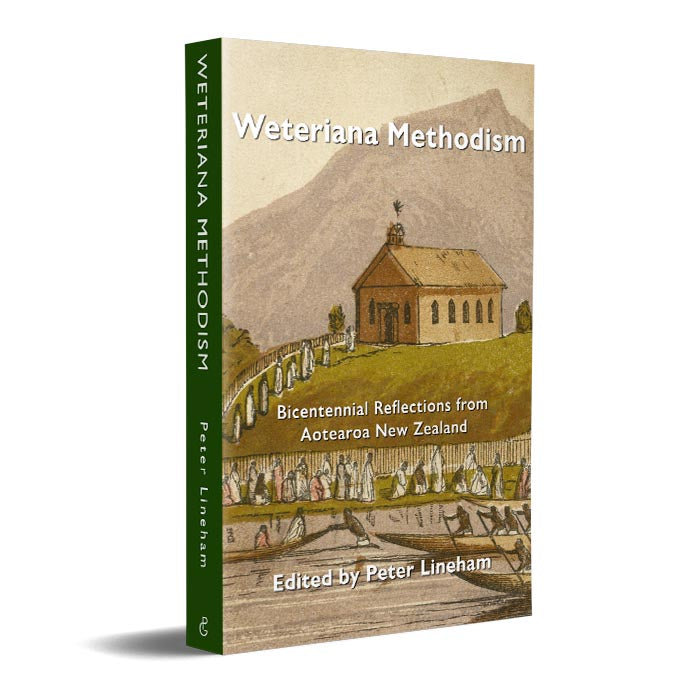Books and resources for ministers, worship leaders, church members and all spiritual people
Philip Garside Publishing Ltd
Weteriana Methodism - Print.
Weteriana Methodism - Print.
Couldn't load pickup availability
Weteriana Methodism: Bicentennial Reflections from Aotearoa New Zealand
Edited by Peter Lineham
[30 in stock 18 September 2025]
Overseas customers:
Order your print books through your local Amazon store and avoid the high cost of postage from New Zealand:
Amazon.com | Amazon UK | Amazon Aust.
Weteriana Methodism re-examines the Wesleyan mission's impact in Aotearoa New Zealand from 1819 onwards, centering on indigenous voices and perspectives.
Edited by Peter Lineham, and published in association with the Wesley Historical Society (NZ), this collection of essays illuminates the complexities of Māori engagement with Christianity, providing essential insights for understanding the enduring legacy of Methodism today.
Read this book to:
- Gain a deeper understanding of the complex history of Methodism in Aotearoa New Zealand.
- Explore the diverse voices and experiences of Māori communities in relation to the Wesleyan mission.
- Challenge traditional narratives and gain new perspectives on missionary history.
- Enhance your knowledge of indigenous studies and colonial impacts on faith communities.
- Contribute to meaningful conversations about the legacy of Christian missions in contemporary society.
- Enjoy a well-researched and engaging collection that fosters critical thinking and reflection.
Features
- A collection of essays from prominent historians and scholars.
- Focus on Māori perspectives and experiences with the Wesleyan mission.
- Examination of the roles of early Māori supporters and missionary women.
- A bicentennial reflection that contextualises the past within today's societal issues.
- Richly detailed analysis combining historical research with contemporary relevance.
- Ideal for scholars, students, and anyone interested in the intersections of faith, culture, and history.
Soft cover 248pp
5 colour and 16 b/w historical photos, paintings and drawings
5 maps of mission stations and other significant locations
ISBN 9781991027856
177.8cm w, 245mm h, 16mm d (7" x 10" x 0.6")
Philip Garside Publishing Ltd (2024)
Click for eBooks (in PDF, ePub and Mobi formats)
Description
Delve into the rich and often overlooked history of Methodism in Aotearoa New Zealand with this compelling collection of essays marking 200 years since Methodist missionaries first arrived. Edited by renowned historian Peter Lineham, this book reframes the narrative of the Wesleyan mission to the Māori people, highlighting their agency, culture, and the complex interactions between Māori society and Christian faith.
Contributors including Roshan Allpress, Glen O’Brien, and Susan Thompson explore the diverse voices within this history, from early Māori supporters to the pivotal roles of missionary women. The essays challenge dominant narratives, addressing the intricacies of Māori engagement with the mission and shedding light on indigenous perspectives that have often been sidelined.
Essential reading for scholars, students, and anyone interested in the intersections of faith, culture, and history, Weteriana Methodism invites readers to reconsider the legacy of Christian missions in Aotearoa and the ongoing journey of Māori Methodism in the 21st century.
From the back cover
200 years ago Methodists arrived in Aotearoa New Zealand as Christian missionaries to the Māori people. They have often been overlooked in comparison with the Anglican missionaries who preceded them, but their mission stations stretched down the West Coast of New Zealand from Hokianga to south Taranaki, and also in three locations in the South Island. They were the second largest of the missionary organisations.
Traditionally the story of the missionaries has been the dominating narrative. This book sets out to reframe the analysis, tracking and analysing the stories of the many participants in the Wesleyan mission.
The book challenges traditional narratives, and shows the complexity of Māori society and its engagement with the mission. It shows the broad context of the Wesleyan mission’s English supporters and its Māori defenders and proponents.
A key theme has been the need to extract Weteriana Methodism from a colonial cloak, and to hear indigenous voices. This book suggests new ways in which the 19th century missionary movement needs to be read. It is essential reading for those interested in indigenous studies and in the ways in which Christianity adapted to new cultures, with both positive and negative results.
- Roshan Allpress explores the community that gave its support to the formation of the Wesleyan Missionary Society, and guided its move to New Zealand and the South Seas.
- Glen O’Brien casts a close eye on Samuel Leigh who first visited New Zealand in 1819, and was the pioneer Wesleyan missionary in 1822-23.
- Gary Clover looks closely at the second location of Wesleyan missionaries, in the Hokianga, after their flight from Whangaroa, and identifies the key roles played by Māori supporters and catechists.
- Susan Thompson looks at the early missionary women, and what we can know of their role in the mission.
- Geoffrey Troughton examines the Mission’s response to the changing circumstances of New Zealand after 1840, and the pressure on the missionaries to accommodate the settler demand for land.
- Rowan Tautari examines the site of the first missionary base in Kaeo and shows how its identity remains deeply contested in the Māori world.
- Peter Lineham explores what happened to Weteriana Methodism in the 20th century, and how traditional mission sites retained their identity largely through the work of Māori preachers and ministers.
About the Editor

The editor, Peter Lineham, is Emeritus Professor of History at Massey University, and has written extensively on New Zealand religious history. His books and articles cover diverse themes, and he was made a Member of the New Zealand Order of Merit in 2019 for services to religious history and the community.
Contents
Illustrations and Maps
Preface – Ian Faulkner
Abbreviations
Introduction – Peter Lineham
Section One – The Wesleyan Mission
1 – ‘Separating from our best earthly friends’: The British and global contexts of Samuel Leigh and the Wesleyan mission to New Zealand – Roshan Allpress
- Introduction
- The Philanthropists
- Benefits to the Wesleyans
- New Models of Mission
- The Formation of the WMS
- The WMS and the Wesleyan Church
- The WMS and the Pacific
- The Significance of Samuel Leigh
2 – Samuel and Catherine Leigh in Australia and New Zealand – Glen O’Brien
- Introduction
- Leigh and Governor Lachlan Macquarie
- Leigh and the Anglican Clergy
- Leigh and His Fellow Workers
- The Wesleyan Mission in New Zealand
- Conclusion
Section Two – Interactions in Aotearoa
3 – Indigenous Evangelism – with a Wesleyan focus – Gary Clover
- Introduction: a Diffusion of Christian Influence
- Significant Wesleyan Māori Evangelists, Hokianga-Rakiura
- Trade, Transmission, Transformation and Cross-over Points
- Mission Field Phenomena: Missiologists’ Categories
- Conclusion: A Māorified Christianity
4 – ‘Prepared for Life or Death in the Discharge of our Duty’: Pakeha Missionaries and their Wives – Susan Thompson
- A Neglected Topic
- Diaries
- Correspondence
- Scrapbooks
- Conclusion
5 – Treaty to Tribulation: Methodism, 1840–1870 – Geoffrey Troughton
- Introduction
- Wesleyans and the Treaty of Waitangi
- Growth in the Early 1840s
- Challenges and Tensions
- Questions of Land and Peace
- Theologizing Colonization
- War and the Methodist Ministry
- Conclusion
Section Three: Te Hahi Weteriana
6 – Maea te Kupu: Kaeo, he whenua kurahuna – emerging stories of Methodism: Kaeo, land of hidden knowledge – Rowan Tautari
- Mihi
- He Kupu Timatatanga
- Structure
- Wāhanga 1: Kaeo, 1822
- Theme 1: Kaeo as Whenua
- Theme 2: Kaeo as Settler Colonial Imaginary
- Wāhanga 2: Kaeo, 1922
- Theme 3: Kaeo as Exclusion
- Theme 4: Kaeo as Inclusion
- Wāhanga 3: Kaeo, 2022
- Theme 5: Kaeo as Remembrance
- Theme 6: Kaeo as Yearning
- Conclusion
7 – Māori Methodism 1913-1960 – Peter Lineham
- Apology
- The European View
- Statistically Speaking
- The Alienation of Māori from the Church
- The Last European Missionaries
- The Significance of Seamer
- Responding to Rātana
- Reshaping Methodist Structures
- The Work of the Deaconesses
- The Ordained Māori Ministry
- Employed Home Missionaries
- Local Preachers and Honorary Home Missionaries
- Church Buildings and Places of Worship
- South Island Māori
- The Hokianga and Kaipara Districts
- Taranaki-Waimarino
- Waikato
- Kīngitanga Links
- Links with other Denominations
- The Tone of Māori Methodism
- Politics and Faith
- Impoverishment and Community Decline
- Advancing Māori health and well-being
- Sunday Schools and Other Schools
- Financing the Māori Mission
- The Waiata Choir
- Responding to Urbanisation
- The Post-War Crisis in Direction
- Explaining this era
- The Influence of Māori Methodism
Appendices
Appendix 1 – Alphabetical Record of Wesleyan Missionaries to 1855 – Gary Clover
- Missionaries
- Incomplete List of Employed Staff of the Mission
- Early Māori Catechists and Native Ministers
Appendix 2 – New Zealand Wesleyan Mission Stations 1819-1860 – Gary Clover
- Introduction
- Glossary
- Bay of Islands: Rangihoua & Paihia, 1819-1823
- Whāngaroa: Wesleydale, Kaeo, 5 June 1823-10 January 1827
- Hokianga
- Hokianga Circuit
- Northern Wairoa
- Auckland
- Manukau Circuit
- Waikato Coast
- Kāwhia
- Waipā River
- Taupo
- North Taranaki
- South Taranaki
- Upper Whānganui River
- Port Nicholson
- Nelson & Canterbury
- Otago
- Sources: Printed & Digital
Bibliography
- Archival
- Books, Journal Articles and Theses
About the Contributors
Illustrations and Maps
Illustrations
- The New Zealand Chiefs in Wesley’s House, 1863
- The Native Village of Ki-ho New Zealand with the original mission house of W White
- Wesleydale Mission Station, Kaeo, Whangaroa, Northland
- Dedication of the Cairn at Wesleydale, Kaeo, 8 March 1922. Group of ministers addressing crowd at unveiling
- Dedication of the Cairn at Wesleydale, Kaeo, 1922. Rev Robert Tahupōtiki Haddon speaking
- Mangungu mission station 1850s
- Mangungu mission station 6 January 1858, drawn by Sarah Orriss
- Reverend Samuel and Sarah Ironside
- Eliza White née Leigh (1809-1883)
- Jane Hobbs nee Brogriffe or Broggreff (1799-1883)
- Drawing by Thomas Buddle showing the Te Kopua Wesleyan Mission Station
- Missionary distributing bibles to Taranaki Māori in 1842
- Wesleyan Mission Station, Waingaroa
- Samuel Leigh, the first Wesleyan missionary in New Zealand
- Hone Mohi Tawhai (Ngāpuhi, 1834-1894)
- Horomona Pōhio (Ngāi Tahu, Ngāti Māmoe and Waitaha, 1815-1880)
- Tamati Waka Nene (Ngāti Hao, died 1872)
- Wiremu Nēra Te Awa-i-taia, (Ngāti Māhanga, d 1866)
- The Māori Mission Party, 1908
- Methodist Waiata Maori Choir, c. 1932
- Māori Mission Field Spiritualities chart
Maps
- Northland preaching places, churches & mission stations
- Auckland preaching places, deaconess locations and mission stations
- Taranaki / Whanganui preaching places, deaconess locations and mission stations
- Waikato preaching places, churches and mission stations
- Other mission stations
